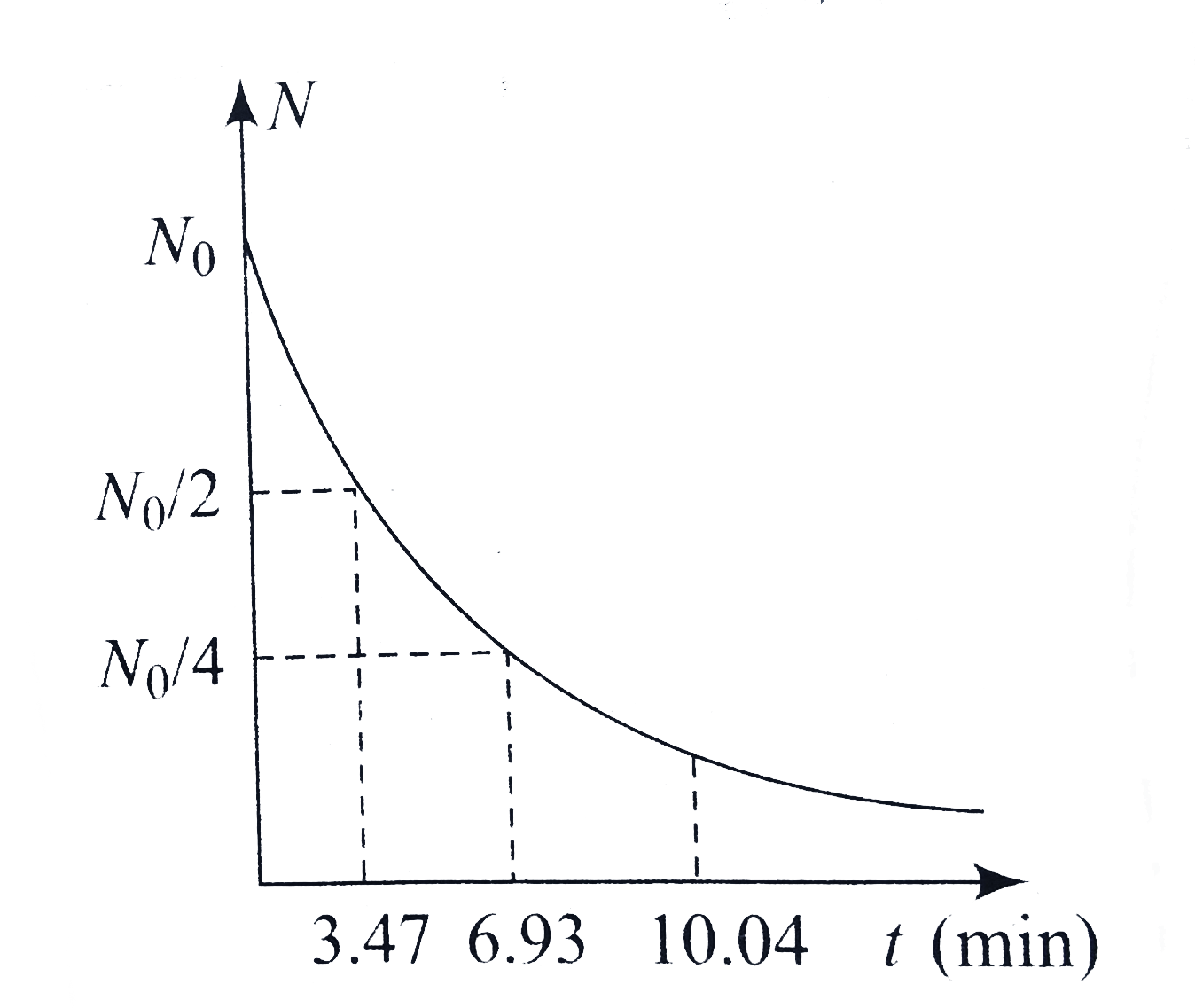A radio nuclide consists of two isotopes. One of the isotopes decays by α-emission and other by β-emission with half-lives T1=405s and T2=1620s, respectively. At t=0, probabilities of getting α and β-particles from the radio nuclide are equal . Calculate their respective probabilities at t=1620s. If at t=0, total number of nuclei in the radio nuclide are N0. Calculate the time t when total number of nuclei remained undecayed becomes equal to N0/2.
log102=0.3010, log105.94=0.7742 and x4+4x−2.5=0,x=0.594
The correct Answer is:A, B
(i) At t=0, probabilities of getting α and β particles are same. This implies that initial activity of both is equal. Say it is R0.
Activity after t=1620s,
R1=R0(12)1620/405=R016
and R2=R0(12)1620/1620=R02
Total activity, R=R1+R2=916R0
Probability of getting α-particles,
=R1R=19
and probability of getting β-particles
=R2R=89
(ii) R01=R02
∴ N01T1=N02T2
∴ N01N02=14
Let N0 be the total number of nuclei at t=0.
Then, N01=N05 and N02=4N05
Given that N1+N2=N02
or N05(12)t/405+4N05(12)t/1620=N02
Let (12)t/1620=x
Then, above equation becomes x4+4x−2.5=0
∴ x=0.594 or (12)t/1620=0.594
Solving, it we get t=1215s.
Topper's Solved these Questions
Similar Questions
A radioactive sample consists of two isotopes one of then decays by α− emission with a half life of τ1=405s and the other one decays by β emission with half life of τ1=1620s.Attimet=0,probabilitiesof≥∈galphaandbetapartic≤somthesamp≤areequal.<br>(a)Ifapartic≤comingoutofthesamp≤isdetectedatt=1620s,wˆistheprobabilitytˆitisalphapartic≤?<br>(b)F∈dthetimewhen→talνmberofsurviv∈gνc≤iishalfthe∈itialquantity.<br>GivenIfx^(4)+4x-2.5=0thenx=0.59<br>"log"_(10)2=0.301, "log"_(10)5.9=0.774
View SolutionAt time t=0 , number of nuclei of a radioactive substance are 100. At t=1 s these numbers become 90. Find the number of nuclei at t=2s.
View Solution
Knowledge Check
Number of nuclei of a radioactive substance at time t=0 are 2000 and 1800 at time t=2 s. number of nuclei left after t=6s is
A1442B1554C1652D1458A radioactive sample undergoes decay as per the following gragp. At timet=0, the number of undecayed nuclei is N0. Calculate the number of nuclei left after 1h.
 .AN0/e8BN0/e10CN0/e12DN0/e14
.AN0/e8BN0/e10CN0/e12DN0/e14A radioactive nuclide is produced at a constant rate α−per second/ It's decay constant is λsec−1. If N0 b the number of nuclei at time t=0, then maximum number of nuclei at any instant possible are:
AαλBN0−αλCλαDα+λN0
Number of nuclei of a radioactive substance are 1000 and 900 at times t=0 and time t=2s. Then, number of nuclei at time t=4s will be
View SolutionA radio nuclide X is produced at constant rate α. At time t=0, number of nuclei of X are zero. Find
(a) the maximum number of nuclei of X.
the number of nuclei at time t.
Decay constant of X is λ.
View SolutionConsider the situation of the previous problem.suppose the production of the radioactive isotope starts at t=0. Find the number of active nuclei at time t.
View SolutionThe half life of a radio nuclide is 77 days then its decay constant is
View SolutionThe half life of a radioactive substance is T0. At t=0,the number of active nuclei are N0. Select the correct alternative.
View Solution
